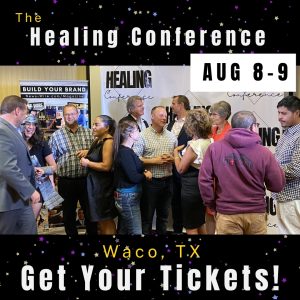Steve Reed at The Healing Conference: Lessons in Healing and Transformation
Steve Reed, a renowned speaker and author of Restored by Grace, shared profound lessons on healing and restoration at The Healing Conference. His message focused on forgiveness, grace, and rediscovering personal identity. Through compelling parables, he illustrated the transformative power of these principles in overcoming rejection, abuse, and trauma. Here, we delve into his shared lessons and the actionable insights they provide.
The Importance of Healing Through Grace
Grace is a central theme in Steve Reed’s teachings. It represents a divine and personal healing process, offering a way to overcome the pain of the past and move toward a restored life. He emphasized that healing by grace requires forgiveness, not just of others but also of oneself. Through grace, individuals can rebuild from their brokenness and emerge as vessels ready to fulfill a greater purpose.
Definition of Restoration by Grace
Restoration by grace is the process of being made whole through divine intervention and personal growth. It is the acknowledgment that while wounds may leave scars, they can also lead to a deeper understanding of oneself and one’s place in the world. This approach blends emotional healing with spiritual reflection, allowing people to reclaim their dignity and self-worth.
Why Grace Matters in Personal Growth
Steve Reed explained that grace is the foundation for overcoming life’s hardships. Whether the wounds stem from rejection, abandonment, or abuse, grace provides a path to forgiveness and peace. It enables individuals to leave behind resentment and shame, empowering them to take meaningful steps toward healing and transformation.
Parables Shared by Steve Reed
Steve Reed conveyed his lessons on healing and restoration through illustrative parables. Each story highlighted common struggles people face, from rejection to trauma, and the steps they take to rediscover hope and purpose.
Joe and Cindy: Overcoming Rejection
Joe and Cindy’s story revolves around rejection within their community. As active church members, their lives took a turn when conflict arose, leading to their exclusion from the congregation. Cindy, in particular, built emotional walls that isolated her from others, including her husband.
Through reflection and grace, Cindy could confront her pain and forgive those who hurt her, including her husband and God. This transformation restored their relationship and allowed Cindy to reengage with life and her faith.
Lesson: Forgiveness is essential to breaking down emotional walls. Letting go of resentment is the first step toward rebuilding relationships and finding peace.
Candy: Breaking Free from Abuse
Candy’s journey depicted the long-term impact of trauma and abuse. From a young age, she endured exploitation and manipulation, leading to years of emotional scars and destructive behavior. Her path to healing began with acknowledging the pain and shame she carried and confronting the source of her trauma.
Through a step-by-step process, she reclaimed her sense of self. By the end of her journey, Candy embraced a new identity as “God’s beautiful princess,” signifying her restoration and newfound purpose.
Lesson: Healing requires addressing the deep wounds of the past. Through forgiveness and self-discovery, individuals can shed their pain and embrace their worth.
Ron: Rediscovering Identity
Ron’s story highlighted the damage caused by years of verbal and emotional abuse. His experiences left him feeling emasculated and unworthy, even as he tried to rebuild his life. When Ron faced the question, “Who are you?” he struggled to find an answer beyond his perceived failures.
Through guided reflection and encouragement, Ron eventually embraced a new identity as a “mighty warrior for God.” This transformation empowered him to overcome his past and step into a life of purpose and confidence.
Lesson: Rediscovering identity is crucial for overcoming feelings of inadequacy. Self-acceptance and belief in a higher purpose can redefine how individuals view themselves.
Key Themes and Lessons
Steve Reed’s teachings are built on foundational themes that resonate across all the parables he shared. These themes offer valuable insights for anyone seeking healing and personal growth.
The Power of Forgiveness
Forgiveness emerged as a recurring element in Steve Reed’s message. It is releasing resentment toward others, oneself, and even God. Forgiveness is not about excusing harmful actions but about freeing oneself from the burden of bitterness. By letting go, individuals can find peace and open themselves to the possibility of restoration.
Rediscovering Identity
Answering the question “Who are you?” is central to Reed’s approach. Many people carry labels imposed by their circumstances, such as “victim” or “failure.” Steve encouraged attendees to reject these labels and embrace an identity rooted in their intrinsic worth and divine purpose.
Faith as a Transformational Tool
Faith plays a vital role in the healing process. Steve Reed emphasized that trust in a higher power can provide strength and guidance during pain. Faith allows individuals to see beyond their current struggles and believe in the possibility of a restored and fulfilling life.
The Healing Process
Steve Reed shared a structured approach to healing, offering practical steps for those seeking restoration. This process combines emotional introspection with actionable strategies for change.
Steve’s Step-by-Step Approach
- Identify Areas of Brokenness: Begin by acknowledging the pain and struggles that need healing. This step requires honesty and vulnerability.
- Confront Raw Emotions: Allow suppressed feelings to surface, creating space for reflection and understanding.
- Lay a Foundation for Healing: Engage in exercises that promote forgiveness, self-discovery, and the release of negative emotions.
- Embrace a New Identity: Replace old labels with empowering affirmations rooted in faith and self-acceptance.
Insights from His Book, Restored by Grace
Steve’s book, Restored by Grace, offers an in-depth look at the principles and practices he teaches. It provides a roadmap for personal transformation, including tools for addressing trauma, rebuilding relationships, and discovering purpose. Attendees were encouraged to explore the book to deepen their understanding and apply its lessons.
Conclusion
Steve Reed’s presentation at The Healing Conference profoundly explored grace, forgiveness, and personal transformation. He offered a message of hope and restoration through illustrative parables and actionable insights. His teachings remind us that pain and trauma may leave scars but can also pave the way for growth and purpose.
The key takeaway is that healing is possible for everyone. By embracing grace, rediscovering identity, and practicing forgiveness, individuals can overcome their struggles and live victorious lives. As Steve Reed emphasized, restoration is not just about fixing what is broken but about becoming a vessel ready to fulfill a greater purpose.







